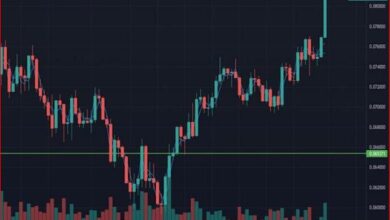China’s trade has suffered its worst drop in two and a half years because of problems with COVID and weak demand.

In November, China’s exports and imports fell at the fastest rate in at least 2 1/2 years. Weak global and domestic demand, production problems caused by COVID, and a drop in property prices in China all put pressure on the world’s second-largest economy.
The downturn was much worse than what the markets had predicted, and economists are predicting a long period of falling exports. This is part of a sharp drop in world trade as consumers and businesses cut spending in response to aggressive moves by central banks to control inflation.
Exports dropped 8.7% from a year earlier in November. This was a bigger drop than the 0.3% drop in October, and it was the worst performance since February 2020, according to data released by the government on Wednesday. Analysts had predicted a drop of 3.5%, which was much less than what happened.
Related: China’s trade falls sharply because there isn’t much demand and there are problems at home with COVID.
Beijing is working to loosen some of the strict rules it put in place during the pandemic, but outbound shipments have been slowing down since August. This is because rising inflation, interest rate hikes in many countries, and the crisis in Ukraine have brought the world economy close to a recession.
In a note, Julian Evans-Pritchard, a senior China economist at Capital Economics, said that exports are likely to drop even more in the next three months.
“The loosening of (China’s) virus restrictions will give exports a small boost, but it won’t be enough to make up for the fact that manufacturers no longer have to deal with a big problem,” he said.
“The drop in global demand for Chinese goods due to the end of the pandemic and the coming global recession will have a much bigger effect.”
In response to the growing pressure on China’s economy, state media reported on Wednesday that at a high-level meeting of the ruling Communist Party the day before, it was made clear that the government will focus on stabilizing growth, boosting domestic demand, and opening up to the rest of the world in 2023.
“The Politburo meeting held yesterday shows that domestic demand will be the main driver of growth next year, and the fiscal policy will continue to be proactive to support demand,” said Hao Zhou, chief economist at Guotai Junan International.
‘BUMPY REOPENING’
Controlling pandemics for almost three years has cost China’s economy a lot and made a lot of people angry and tired.
Widespread COVID restrictions also hurt importers. Shipments coming in went down by 10.6%, which was much more than the 0.7% drop in October and less than the 6.0% drop that was expected. The downturn was the worst since May 2020. This was partly because the year before was so good.
In November, imports of crude oil and copper went up while imports of soybeans and iron ore went down.
This led to a smaller trade surplus of $69.84 billion, down from a surplus of $85.15 billion in October. This was the lowest trade surplus since April, when Shanghai was shut down. Analysts thought there would be a surplus of $78.1 billion.
In response to slowing economic growth, the government has taken a number of steps in recent months. These include lowering the amount of cash that banks must keep as reserves and easing restrictions on financing to help the property market.
Analysts are still doubtful, though, that the steps will lead to fast results because the full-scale loosening of pandemic controls will take more time and because both domestic and international demand are still low.
Many businesses are still struggling to get back on their feet, and last week’s surveys of factory activity in China and around the world showed that many more months of hard work lie ahead.
Related: European shares slip with China’s COVID checks in focus
Foxconn, an Apple (NASDAQ:AAPL) supplier, said that sales in November were 11.4% lower than the same month last year. This was because of problems with COVID controls at the world’s largest iPhone factory in Zhengzhou.
“The move away from zero COVID and the increase in support for the property sector will eventually lead to a recovery in domestic demand,” Evans-Pritchard said. However, this likely won’t happen until the second half of next year.
Since the Chinese yuan has already dropped sharply this year, policymakers don’t have much room to move. This is because a big monetary policy stimulus at home at a time when interest rates around the world are rising quickly could cause a lot of money to leave the country.
The Ukraine war, which led to a rise in already high inflation around the world, has made geopolitical tensions worse and hurt business prospects even more.
In the first three quarters of this year, China’s economy only grew by 3%, which is much less than the annual goal of around 5.5%. Analysts think that growth for the whole year will be just over 3%.
The chief economist at Pinpoint Asset Management, Zhiwei Zhang, said that China’s “bumpy reopening” process should be taken into account.
“As global demand falls in 2023, China will have to rely more on domestic demand,” he said.





